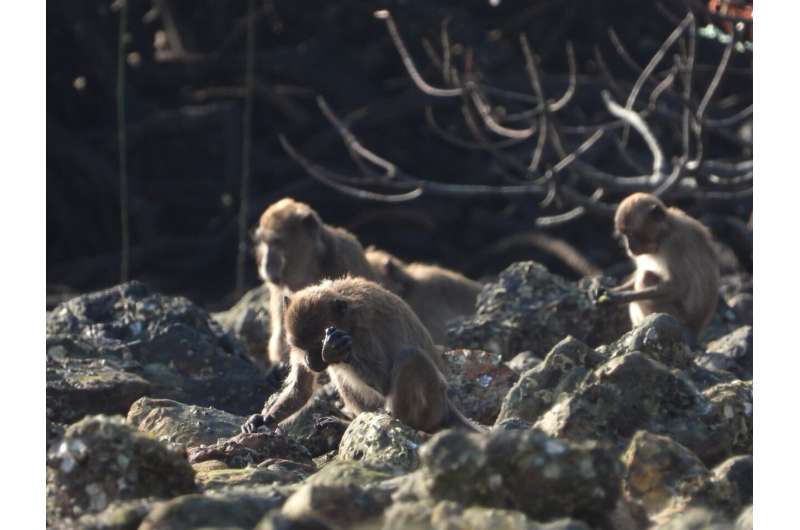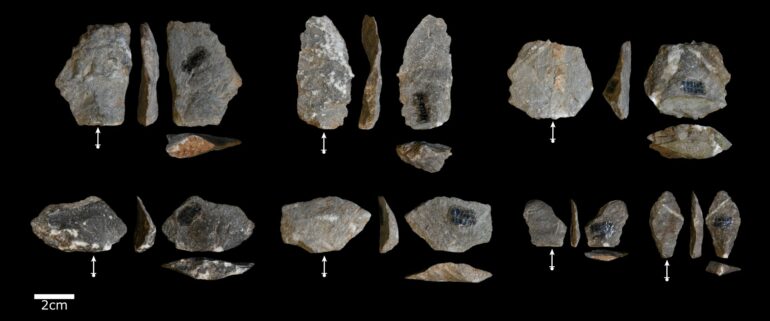Research by anthropologists at the Max Planck Institute for Evolutionary Anthropology have discovered that stone tool making is not unique to humans and their ancestors.
Published in Science Advances, the study is based on new analyses of stone tools used by long-tailed macaques in the Phang Nga National Park in Thailand. These monkeys use stone tools to crack open hard-shelled nuts. In that process, the monkeys often break their hammerstones and anvils. The resulting assemblage of broken stones is substantial and widespread across the landscape. Moreover, many of these artifacts bear all of the same characteristics that are commonly used to identify intentionally made stone tools in some of the earliest archaeological sites in East Africa.
“The ability to intentionally make sharp stone flakes is seen as a crucial point in the evolution of hominins, and understanding how and when this occurred is a huge question that is typically investigated through the study of past artifacts and fossils. Our study shows that stone tool production is not unique to humans and our ancestors,” says lead author Tomos Proffitt, a researcher at the Max Planck Institute for Evolutionary Anthropology.
“The fact that these macaques use stone tools to process nuts is not surprising, as they also use tools to gain access to various shellfish as well. What is interesting is that, in doing so they accidently produce a substantial archaeological record of their own that is partly indistinguishable from some hominin artifacts.”

Example of a long-tailed macaque using a stone tool to access food. © Lydia V. Luncz
New insights into the evolution of stone tool technology
By comparing the accidentally produced stone fragments made by the macaques with those from some of the earliest archaeological sites, the researchers were able to show that many of the artifacts produced by monkeys fall within the range of those commonly associated with early hominins. Co-lead author Jonathan Reeves says, “The fact that these artifacts can be produced through nut cracking has implications for the range of behaviors we associate with sharp edged flakes in the archaeological record.”
The newly discovered macaque stone tools offer new insights into how the first technology might have started in our earliest ancestors and that its origin may have been linked to similar nut cracking behavior, which could be substantially older than the current earliest archaeological record.
“Cracking nuts using stone hammers and anvils, similar to what some primates do today, has been suggested by some as a possible precursor to intentional stone tool production. This study, along with previous ones published by our group, opens the door to being able to identify such an archaeological signature in the future,” says Lydia Luncz, senior author of the study and head of the Technological Primates Research Group at the Max Planck Institute for Evolutionary Anthropology. “This discovery shows how living primates can help researchers investigate the origin and evolution of tool use in our own lineage.”
More information:
Tomos Proffitt et al, Wild macaques challenge the origin of intentional tool production, Science Advances (2023). DOI: 10.1126/sciadv.ade8159. www.science.org/doi/10.1126/sciadv.ade8159
Provided by
Max Planck Society
Citation:
Surprising similarities in stone tools of early humans and monkeys (2023, March 10)



